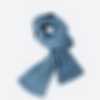Powder Safety Information
General Guidelines for the Handling of Powders:
Please take the following guidelines seriously, whether you’re a beginning reloader or an experienced veteran.
Top-level safety notes:
- NEVER substitute smokeless powder for black powder or for black powder substitutes.
- NEVER mix together any two powders, regardless of type, brand, style or source.
- NEVER use the data on this site for any other powders, even if advertised "similar to Bullseye" or "burns the same as Red Dot," etc.
Detailed safety information:
To perform in a gun, powders must ignite easily and burn rapidly. These characteristics require use of common sense to avoid accidents.
YOU MUST OBSERVE THESE GENERAL PRECAUTIONS:
- DO NOT smoke when reloading.
- DO NOT use spark-producing tools.
- DO NOT mix powders of different kinds.
- DO NOT leave powder where children can get it.
- DO NOT try to load when distracted.
- Avoid an open fire or working near spark-producing machinery.
- Pour out only the amount of powder needed for immediate work.
- Check the powder measure each time it is used. Make sure the settings have not been accidentally changed. Check-weigh "thrown charges" frequently.
- Clean up any spilled powders. Use a brush and dustpan; do not use a vacuum cleaner. Dispose of spilled powder safely.
- Store powder only in its original container, which was carefully designed for this usage. DO NOT REPACKAGE.
- Be sure the powder container is completely empty before discarding. Do not use the container to store other powders or materials, or for any other purpose.
- Always keep in mind that smokeless powder is an explosive material and highly flammable. It should always be stored and handled in such a way as to avoid impact, friction, heat, sparks, or flame.
- Wear safety glasses when reloading.
- This material contains nitroglycerin. Inhalation, skin contact, or ingestion may cause severe headache, nausea, and lowering of blood pressure.
THE FOLLOWING PRECAUTIONS MUST BE OBSERVED WHEN HANDLING POWDERS:
- Do not take internally. In case of ingestion, cause vomiting. Call a Doctor.
- Avoid contamination of food, beverages, or smoking materials.
- Avoid breathing in dust. Ensure adequate ventilation during handling.
- Wash hands thoroughly after handling and before eating, drinking, or smoking.
- Do not carry powder in clothing.
How To Check Smokeless Powder For Deterioration:
Although modern smokeless powders are basically free from deterioration under proper storage conditions, safe practices require a recognition of the signs of deterioration and its possible effects.
Powder deterioration can be checked by opening the cap on the container and smelling the contents. Powder undergoing deterioration has an irritating acidic odor. (Don't confuse this with common solvent odors such as alcohol, ether and acetone.)
Check to make certain that powder is not exposed to extreme heat as this may cause deterioration. Such exposure produces an acidity which accelerates further reaction and has been known, because of the heat generated by the reaction, to cause spontaneous combustion.
Never salvage powder from old cartridges and do not attempt to blend salvaged powder with new powder. Don't accumulate old powder stocks.
The best way to dispose of deteriorated smokeless powder is to burn it out in the open at an isolated location in small shallow piles (not over 1" deep). The quantity burned in any one pile should never exceed one pound. Use an ignition train of slow burning combustible material so that the person may retreat to a safe distance before powder is ignited.
Recommendations For Storage Of Smokeless Powder
STORE IN A COOL, DRY PLACE. Be sure the storage area selected is free from any possible sources of excess heat and is isolated from open flame, furnaces, hot water heaters, etc. Do not store smokeless powder where it will be exposed to the sun's rays. Avoid storage in areas where mechanical or electrical equipment is in operation. Restrict from the storage areas heat or sparks which may result from improper, defective or overloaded electrical circuits.
DO NOT STORE SMOKELESS POWDER IN THE SAME AREA WITH SOLVENTS, FLAMMABLE GASES OR HIGHLY COMBUSTIBLE MATERIALS.
Do not transfer the powder from an approved container into one which is not approved.
DO NOT SMOKE IN AREAS WHERE POWDER IS STORED OR USED. Place appropriate "No Smoking" signs in these areas.
DO NOT SUBJECT THE STORAGE CABINETS TO CLOSE CONFINEMENT. STORAGE CABINETS SHOULD BE CONSTRUCTED OF INSULATING MATERIALS AND WITH A WEAK WALL SEAMS OR JOINTS TO PROVIDE AN EASY MEANS OF SELF-VENTING.
DO NOT KEEP OLD OR SALVAGED POWDERS. Check old powders for deterioration regularly. Destroy deteriorated powders immediately.
OBEY ALL REGULATIONS REGARDING QUANTITY AND METHODS OF STORING. Do not store all your powders in one place. If you can, maintain separate storage locations. Many small containers are safer than one or more large containers.
KEEP YOUR STORAGE AND USE AREA CLEAN. Clean up spilled powder promptly. Make sure the surrounding area is free of trash or other readily combustible materials
Information Regarding Handling, Storing and Disposing of Powders.



